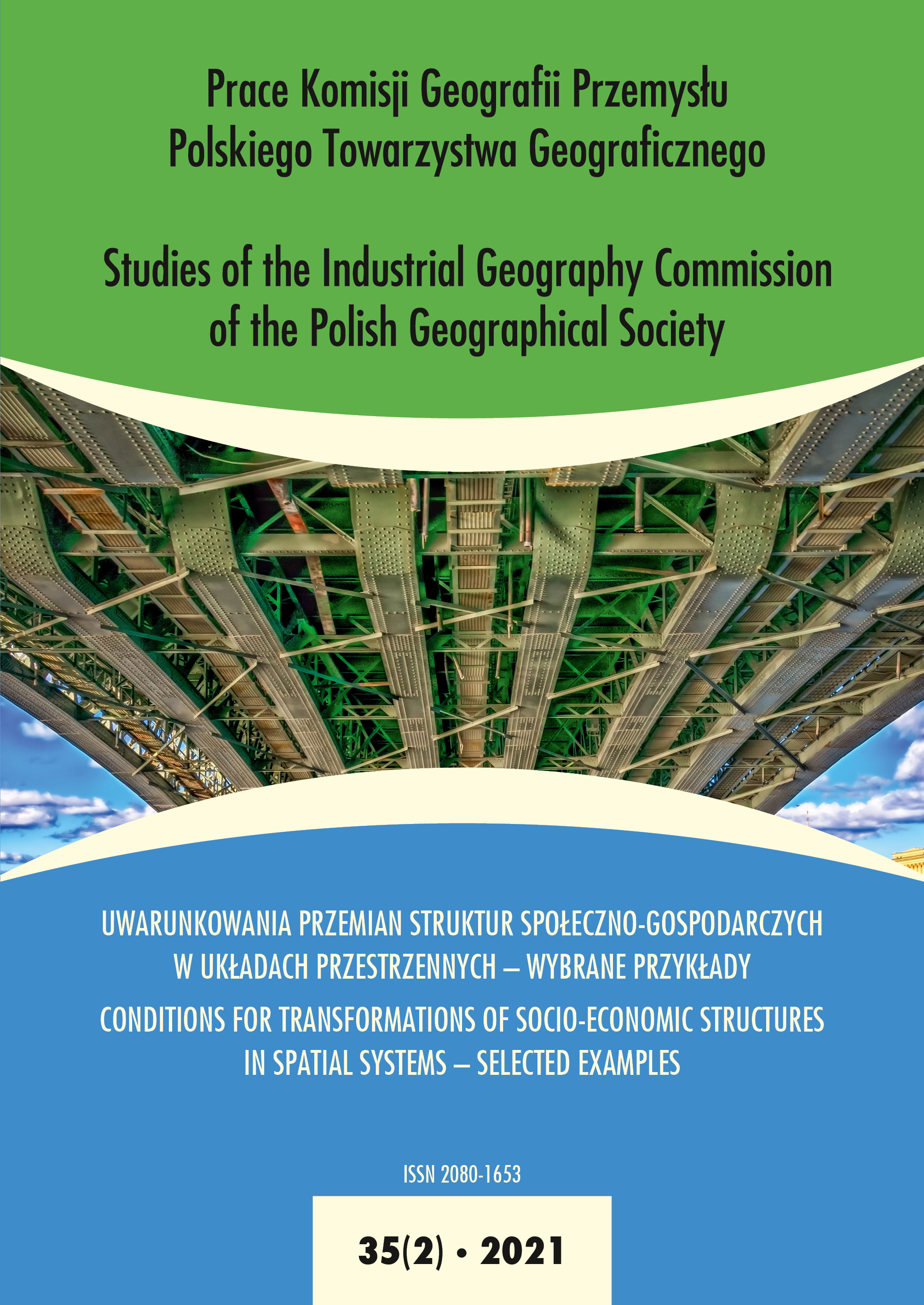Russian border regions in the economic corridor of China-Mongolia-Russia
DOI:
https://doi.org/10.24917/20801653.352.4Keywords:
border regions; cross-border relations; economic corridor China-Mongolia-Russia; foreign enterprises; geostrategic territories; integration.Abstract
The object of the paper are the border regions of Siberia as a part of the planned China-MongoliaRussia economic corridor in China’s foreign policy initiative “One Belt One Road”. The aim of the study is to reveal the nature of the interaction of these regions with the outside world to determine the ways of their development within a common economic space of the corridor. The study is based on the analysis of foreign investment flows to the border regions using macro- and microeconomic methods. The volume foreign capital goes mainly to mining, while other industries are dominated by small enterprises formed by foreign citizens, not corporations. In these areas, intermediary business prevails, which does not require increased human capital. China is gradually replacing other counter-partners in the use of natural resources, including mineral and forest ones. The problems of development of the border regions in common economic space of the corridor due to similar resource specialisation and weak development of the embedded economy have been identified. With the development of transit infrastructure, it is necessary to develop local industries integrated into large projects and capable of using this infrastructure to expand sales markets.
Downloads
Metrics
References
AEI (Agency of economic information) “Prime”. (2019, June 18). Retrieved from https//bir.1prime.ru/
Badaraev, D.D. (2016). Nomadizm v ARVM KNR v usloviyakh promyshlennogo pressinga na pastbishchnye territorii [Nomadism in Inner Mongolia autonomous region of People’s Republic of China in conditions of industrial pressure on pasturable territories]. Vlast’, 5, 139–145 [in Russian].
Bank of Russia. (2020, November 13). External sector statistics. Retrieved from cbr.ru.
Borisov, G.O., Dondokov, Z.B.-D., Namzhilova, V.O. (2017). Ekonomicheskiy koridor KitajMongolia-Rossija: rezhim ozhidaniya [China-Mongolia-Russia Economic Corridor: Standby Mode]. ECO, 5, 98–106.
De Soto, H. (2004). Zagadka kapitala. Pochemy kapitalizm torzhestvuet na Zapade I terpit porazhenie vo vsem ostal’nom mire [The Mystery of Capital. Why Capitalism Triumphs in the West and Fails Everywhere Else]. M.: Olimp-Business [in Russian].
Grayvoronsky, V.V. (2018). Ekonomicheskiy koridor Kitaj-Mongolia-Rossija: nachalo realizatsii prioritetnych proektov v oblasti zhelezhnodorozhnych i avtomobil’nych koridorov cherez Mongoliyu [China-Mongolia-Russia Economic Corridor: start of implementation of priority projects in the field of rail and road corridors through Mongolia]. Proceedings of ChinaMongolia-Russia think tank. Forum 2018. Ulanbaatar: Nat. Univ. of Mongolia. 307–314.
Janzen, J. (2011). Mongolian pastoral economy and its integration into world market under socialist and post-socialist conditions. In: J. Gertel, R. le Heron (eds.), Economic spaces of pastoral production and commodity systems. Farnham: Ashgate, 195–209.
Larin, V. (2016). Rossijsko-kitajskoe transgranich’e v kontekste proektov evrazijskoj integratsii [Russian-Chinese cross-boundary in the context of Eurasian integration projects]. Mirovaja ekonomika I mezhdunarodnye otnoshenija, 12, 69–81.
Mongolian Statistical Information Service. (2020, May 15). Retrieved from www.1212.mn.
Namzhilova, V.O. (2018). Ekonomicheskie koridory na evrazijskom prostranstve: initsiativy Kitaja i mirovoj opyt [Economic corridors in the Eurasian space: China’s initiatives and world experience]. Rossija I ATP, 1, 65–81.
National Bureau of Statistics of China. (2020, May 15). Retrieved from www.stats.gov.cn
Regiony Rossii. Sotsial’no-ekonomicheskiye pokazateli. (2019). Retrieved from http://www.gks.ru/wps/wcm/connect/rosstat_main/rosstat/ru/statistics/publications/catalog/doc_1138623506156 (Accessed on 15.01.2021)
Rossiyskij exportnyj tsentr. (2019, January 20). Retrieved from https://www.exportcenter.ru
Strategiya prostranstvennogo razvitiya Rossiyskoy Federatsii na period do 2025 goda [Spatial development strategy of the Russian Federation]. (2020, November, 10). Retrieved from static.government.ru/media/files/.
Vardomsky, L.B. (2017). Novye prigranichnye regiony Rossii v menyayushchemsya postsovetskom prostranstve [New border regions of Russia in the changing post-Soviet space]. In: L. Popkova (ed.), Border Areas Development Strategy. Traditions and Innovations. Kursk: Kursk Univ., 207–218.
The article was written as a part of the research grants 19-45-240004 and 20-010-00990, financed by the Russian Foundation for Basic Research.
Downloads
Published
How to Cite
Issue
Section
License
Articles are published under the terms of the Creative Commons License (CC BY-ND 4.0; Attribution– NoDerivs).

